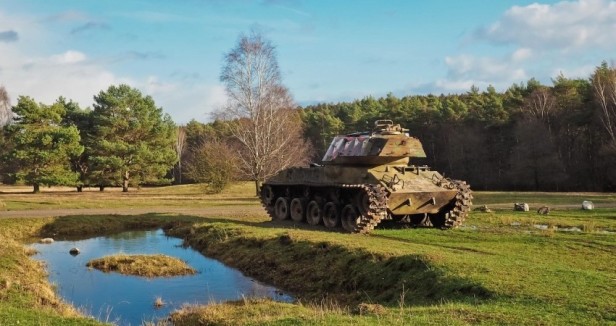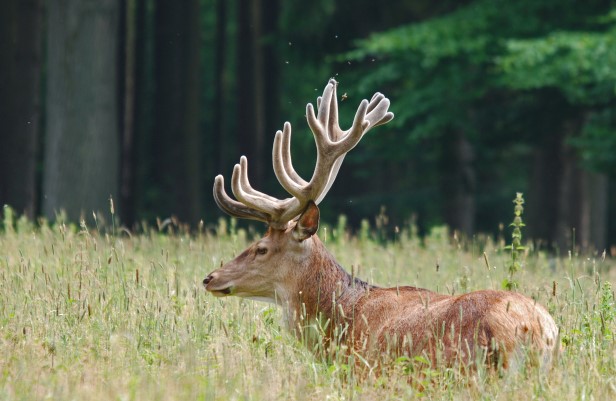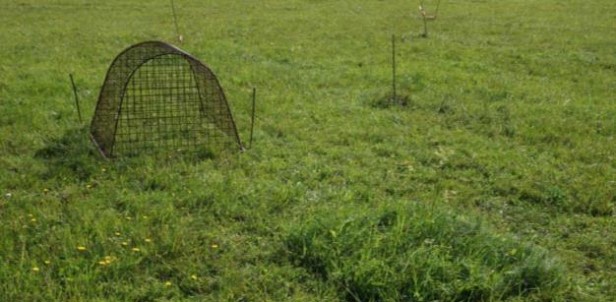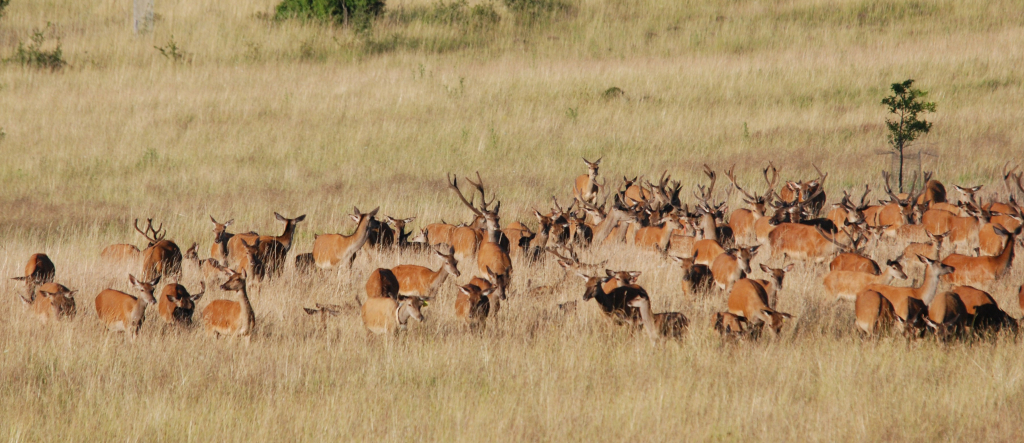- Wild and free: red deer grazing for conservation - 05/06/2019
- Sisters in Science: Dr Liz Dobson - 03/04/2019
- Closing the Gap Between Diversity Talk and Diversity Actions - 13/11/2018
Annabel Smith and Jana Eccard give an account of the Editor’s Choice paper of the June 2019 issue of the Journal of Applied Ecology: Grazing by wild red deer: Management options for the conservation of semi‐natural open habitats by Friederike Riesch and colleagues.
This post was originally published on The Applied Ecologists blog, where it is also available in German. The header photo was taken by Marcus Meißner.
It is widely accepted that semi-natural grasslands in Europe require active management to maintain biodiversity. Without management, woody shrubs typically replace grasslands and many plant species that have persisted for thousands of years will be lost from the area. This fact underlies ‘conservation grazing’ guidelines for managing livestock in semi-natural habitats, such as those embedded into EU agri-environment projects.
But is there a better way than livestock to manage biomass for conservation?
Biomass control can be achieved through mowing, burning or herbicide, but all of these come with high costs and risks. Native large grazers provide many potential benefits compared to livestock, such as the maintenance of soil structure and composition, habitat heterogeneity and biodiversity. Allowing free-roaming wild animals to control biomass can also drastically reduce the financial burden on land managers, because they don’t require fences, food supplements or veterinary intervention.

In Europe, some of the largest conservation areas occur on military training areas. These MTAs have very specialised conservation challenges. First there’s the safety issue. It’s often not possible to use machinery to manage biomass with mowing in areas where there are unexploded ordnance. It might also be impossible to actively maintain livestock that need regular inspection and fence maintenance. The sheer size of MTAs also poses a problem of biomass management; these areas cover more than one million hectares in central and eastern Europe.
The rewilding movement has revitalised public support for letting nature take care of itself. This has sparked renewed interest in allowing large native ungulates to graze freely and, although still a contentious issue, allowing free movement of native predators for top-down ecosystem management. Maintaining populations of native herbivores might be particularly suitable for biomass management across vast MTA landscapes.
To be confident that native herbivores are effective at controlling biomass, we need evidence that they can reduce biomass to sufficient levels and can do so with minimal intervention of their preferred foraging locations. We also need to know how free-ranging native herbivores affect biomass across multiple habitats types, where different ecological plant communities may have different requirements of grazing intensity.

These are precisely the questions that Friederike Riesch and colleagues set out to address in the June 2019 Editor’s Choice article. Working in (safe parts) of the Grafenwöhr military training area in Bavaria, Germany, they installed a series of movable exclusion cages in grasslands (lowland hay meadows) and heathland (European dry heath). They took detailed biomass measurements five times per year over three years to monitor biomass removal by red deer Cervus elaphus.
Grafenwöhr belongs to the European Natura 2000 conservation network and red deer are abundant. During the hunting season (late summer to mid-winter), hunting mainly occurs in forested areas which are also used for timber production, while in grasslands hunting is restricted to minimise disruption to the red deer’s natural habitat choice.
Riesch and her team found that the amount of biomass removal by red deer was similar to that typically achieved by livestock, both in grasslands and heathlands. In grasslands, additional mowing had the benefit of improving forage quality for red deer, measured by an increase in crude protein concentration and a decrease in acid and neutral detergent fiber.
Red deer also foraged differently in different seasons. In grasslands, forage removal peaked in spring and early summer when annual net primary productivity was high. This is important because selective grazing by red deer maintains early growth, preventing the buildup of dead plant material which can shift native plant community composition. In heathlands forage removal was highest in winter, where forage quality was probably just as good as what deer found in in grasslands late in the season.

This new research from Riesch and colleagues showed that grazing by red deer can be as effective as livestock for managing grasslands biomass. In Grafenwöhr, red deer appear to shift grazing pressure throughout the season, depending on productivity and forage quality. Thus, they provide a dynamic service across habitat types, controlling biomass and maintaining habitat heterogeneity.
Active management of deer populations is still important, because if native herbivores have no natural predators they can become overabundant and threaten biodiversity. Overabundance of deer in the northern hemisphere and kangaroos in Australia can both have detrimental effects on biodiversity if left unmanaged.
The situation in Grafenwöhr seems to be unusual since hunting pressure and disturbance are reported to be higher in the forest than in grasslands. Thus, to achieve similar grazing pressure in comparable places, hunting regimes elsewhere would have to be adapted to allow deer to remove sufficient biomass from grasslands. Further, landscape of fear effects from large predators returning to rewilded places may reduce ungulate grazing in open grasslands, as observed in the classic example from Yellowstone National Park.
Two common ecological caveats, not unique to deer grazing, clearly need to be flagged here: context dependence and clarity of goals.
In Europe, horse grazing can have beneficial effects on biodiversity and ecosystem function, while in Australia feral horses are destroying fragile alpine grasslands. Thus, the context and evolutionary history of the ecosystem determines how different types of herbivores influence biodiversity.
And, as with any ecosystem management problem, goals need to be clearly defined. In Europe for example, re-introducing natural processes such as succession might involve different management strategies to conserving biodiversity, since some most of the highly diverse grasslands historically emerged as a consequence of intensive land use by humans, and thus involve some form of active management.
The new research from Riesch and colleagues shows that red deer offer a relatively ‘hands-off’ approach to grassland conservation which is cheaper and requires fewer resources than other biomass management methods. But her team acknowledges, as do other proponents of rewilding, the need for some level of active management to restore natural ecological processes.
Thus, if rewilding is to be truly wild, there needs to be some top-down control, whether from natural predators or human hunters. If not, then biodiversity might decline in the short term.
Looking ahead, how can we provide a ‘helping hand’ for native predators, such as wolves, lynx and bear to take a more active role in managing Europe’s wild places?
Read the full paper, Grazing by wild red deer: Management options for the conservation of semi‐natural open habitats, in issue 56:6 of Journal of Applied Ecology.

